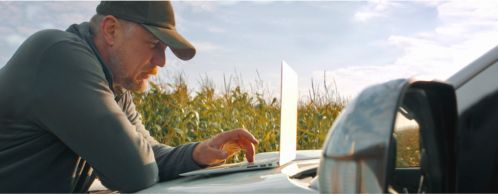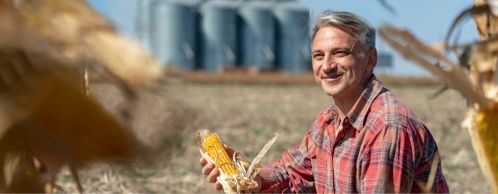
Let’s Talk Heat Stress
Article By: Caleb Burch, GPS Dairy Consulting
Heat stress on dairy cattle has been estimated to cost the US dairy industry upwards of $1.5 billion annually due to losses in productivity and efficiency. Heat stress in cattle come from a combination of temperature and humidity. Cattle can begin feeling effects of heat stress in only 70 degrees Fahrenheit if the humidity is high enough. Heat stress is also cumulative, meaning the longer the cow is subject to heat stress the more it will "wear her down" and the bigger impact it will have on her.
When looking at how much your cows are affected by heat stress, it is important to not just look at pounds of milk shipped, but instead to focus on Energy Corrected Milk or CFP (Combined pounds of fat and protein). Components in milk begin dropping well before fluid milk drops. It is common in the Midwest for cows to produce extremely well through May and June and even into early July before the heat starts to do a number on the cows, from a fluid perspective. However, it is also common for components to begin dropping in March/April and to steadily decline until October/November.
Preventing these losses in overall animal efficiency is why having a good heat abatement plan in place is important. So, what does that look like?
Start in the barn where the cows spend the majority of their day. A simple handheld temperature/windspeed meter is a handy tool to have and costs less than $200. When it is hot outside and the fans are on, the goal is to generate between 5-10 MPH on the cow's backs while they are laying in the stalls. In the alley, the goal would be 2-4 MPH. Be careful to not take one reading and assume the entire barn is the same. It is important to take multiple readings throughout the barn to determine if "dead spots" exist. If you are not consistently hitting these goals, fan strategy should be revisited and additional fans may be needed.
The next step in the barn would be to add water to the cows. Soakers placed above the headlocks or feed rail is a great way to get water on the cows. The soakers should be on a timer to go off periodically and run in short intervals. When it comes to water, placement is very important as you do not want water going into the feed or missing the cows back. Using the correct nozzle to achieve proper droplet size is also important. There are a plethora of good heat abatement guides available that can help guide you through the process of installing more fans or adding water. Finally, don't forget drinking water access. Cows need 3-4 inches of drinking space / cow and the importance of this is amplified during the summer when water intakes are higher.
Another area to focus on is the holding area. The holding area is often one of the warmest and most stressful spots on the dairy. The ROI is quite high for Investing in proper fan coverage as well as soakers in the holding area as a little money goes a long way for cooling cows in a confined space. If cows are in the holding area for a long period of time or have to walk a long way to the holding area, rubber matting can be very helpful to preventing incidence of lameness which tend to creep up during the summer months.
Finally, don't forget feed quality during the summer months. Heat and humidity are not only the enemy of cows, but also the feed they consume. Maintaining a tight face on forage bunkers/piles and minimizing time forages are exposed to oxygen is key during the summer. Make sure to consult with your nutritionist on strategies to maintaining excellent feed quality through the difficult summer heat.
Caleb Burch joined the dairy industry in 2016 working as an independent nutrition consultant and joined GPS Dairy Consulting in 2021. With a strong background in business management, he finds his passion in focusing on improving his customers' bottom line through sound feeding and management decisions.



